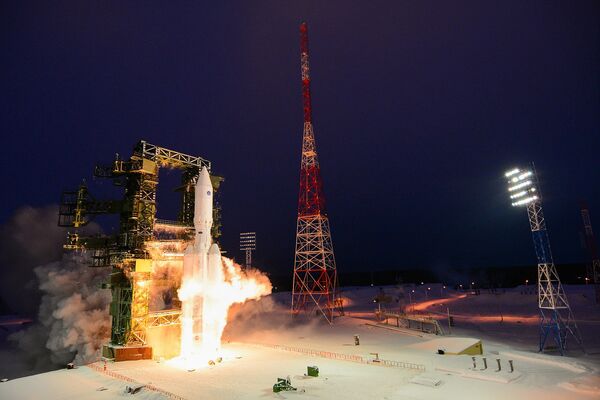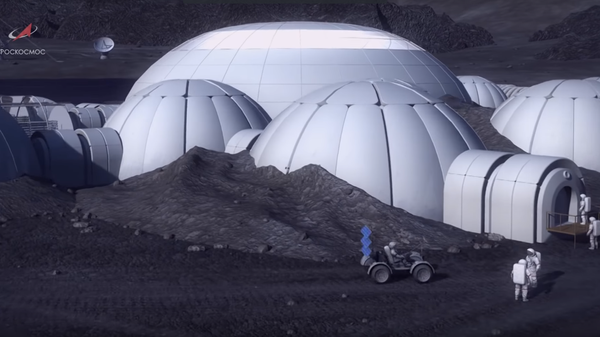Korolev Rocket & Space Corporation Energia has created and patented a means to fly cosmonauts to the Moon and back without an expensive new heavy-launch rocket.
“The technical result [of the method] is the possibility of transporting crew between a near-Earth orbital station and a base station [on the surface of the Moon] using a reusable manned spacecraft without the use of super-heavy launch vehicles and aerodynamic breaking,” the description of the patent published by the Russian Federal Service for Intellectual Property reads.
To land cosmonauts on the Moon and bring them back home, the patented system requires one Soyuz-2.1a rocket and three upgraded Angara A5V rockets, and works as follows:
- An Angara A5V is sent to the Moon with a fuel module onboard.
- Cosmonauts are transported to the International Space Station or other space station aboard a Soyuz-2.1a rocket inside a Soyuz MS spacecraft.
- From there, cosmonauts transfer to a reusable spacecraft capable of lunar takeoff and landing. A second Angara A5V delivers an upper stage and tanker vessel. The upper stage is used to send the manned spacecraft/tanker combo to the Moon.
- Upon making it to lunar orbit, the reusable lander detaches, makes its way to the landing zone of the refueling module delivered earlier, fuels up for takeoff back into lunar orbit, and before departure, docks with the orbiting tanker and fuels up for the flight back to Earth.
- Next, the tanker ship is deorbited and falls to the Moon, while the reusable lander complex begins its journey home.
- On the way, it docks with the third Angara A5V for mid-flight refueling. Finally, it docks with the space station orbiting Earth, where crew are transferred back to the Soyuz-MS spacecraft and sent back to the planet.

In the patent description, Energia concludes that this method has “significantly lower costs for the development, production and testing” compared to prospective alternatives.
Russian space agency Roscosmos approved a preliminary design for the Yenisei super-heavy launch vehicle and its super-super heavy-lift version, the Don, late last year. The Yenisei is expected to be able to take a payload of over 100 tons into low-Earth orbit, or a 27 ton payload to the Moon. The Don variant is expected to have a maximum payload of about 140 tons, or deliver a 33 ton useful cargo to the Moon. Testing of the Yenisei is expected to begin in 2028 if everything goes to plan and the necessary funding is provided.
The rockets are required to be capable of launching the 20 ton Oryol spacecraft (expected to replace the Soyuz) plus a 27 ton lunar lander, and base modules weighing between 27 and 32 tons.
Last year, Deputy Prime Minister for Defence and Space Industry Yuri Borisov estimated that the super-heavy launch vehicle program could cost between 1 trillion and 1.7 trillion rubles, ($14-$23.7 billion US, respectively). For comparison, Roscosmos’s 2020 budget is only 176 billion rubles ($2.77 billion).
Energia itself has experience in the development of heavy-lift rockets, creating the Energia heavy lift rocket, with a 100 ton useful payload capacity, in the 1980s, and using it to carry the Buran Soviet space shuttle into orbit in 1988 for a test flight. Unfortunately, the rocket was retired after the collapse of the Soviet Union. However, modified versions of its engines have gone on to be used to power both Russian and American space rockets.

